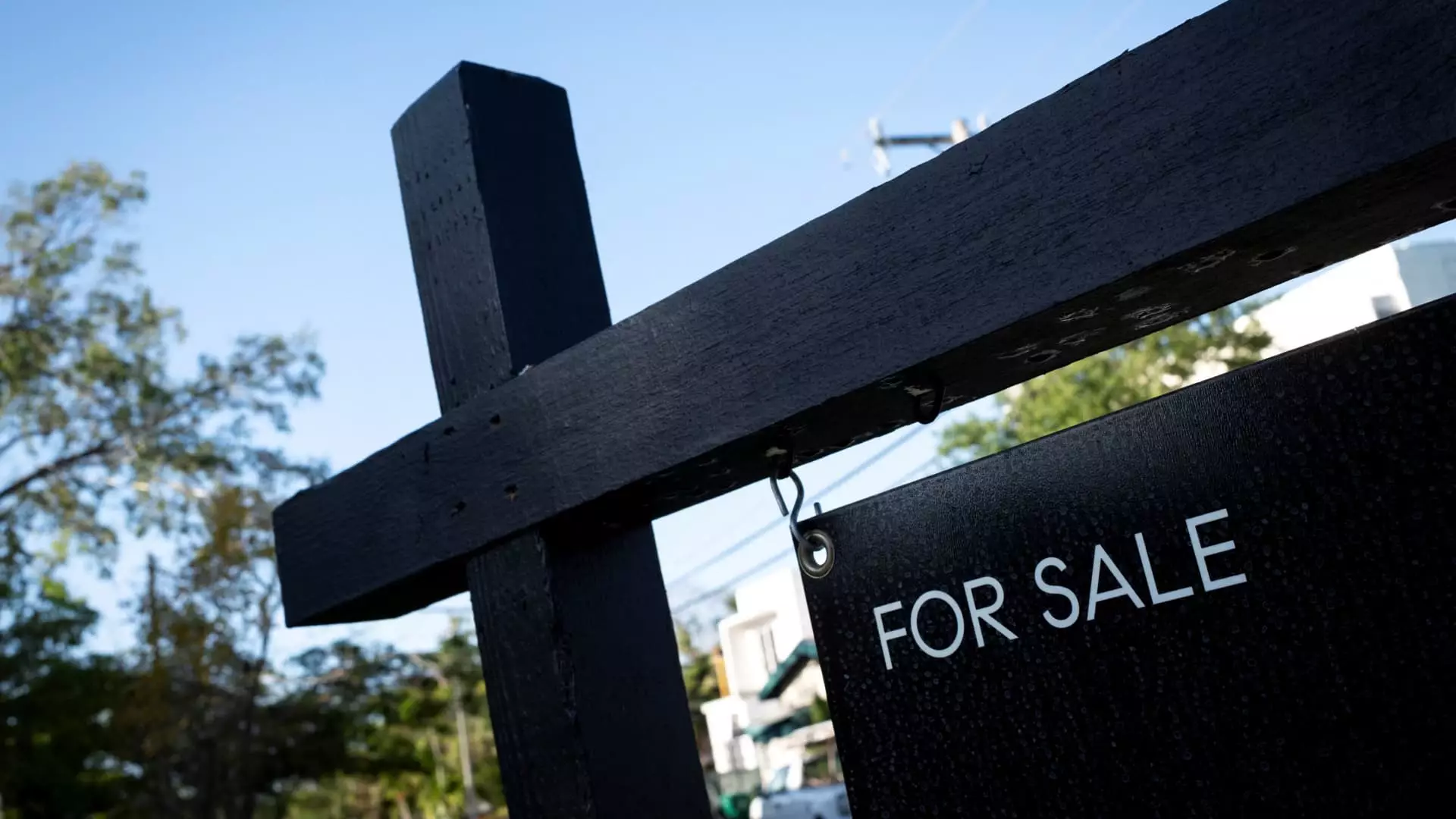The current state of the housing market paints a disconcerting picture as weak consumer sentiment casts a long shadow over what should be a season of opportunity for homebuyers. Recent statistics, particularly a 3% drop in mortgage applications for home purchases, signal a growing reluctance among potential buyers. Though this figure seems modest, it cannot be overlooked when viewed against the broader backdrop of a persistently volatile economic landscape. Interestingly, while there has been a year-over-year increase of 14% in applications, the juxtaposition of these numbers highlights a troubling dichotomy—today’s prospective buyers are caught in a web of emotional and financial uncertainty.
The Mortgage Rate Conundrum
Despite a decrease in the average contract interest rate for 30-year fixed-rate mortgages, which fell to 6.84%, the sluggish response from potential buyers raises a critical question: why are lower rates failing to stimulate demand? One plausible explanation lies in the ongoing geopolitics and tariff-induced volatility that loom large over financial markets, as noted by Joel Kan of the Mortgage Bankers Association. The fluctuations that have characterized recent months appear to be suppressing any optimism that lower rates might ordinarily generate.
Moreover, the slight increase in origination fees indicates that lenders, perhaps sensing the anxiety in the market, are preparing for the potential of a turbulent future. It’s a paradox where cheaper loans do not equate to increased purchase activity; rather, they seem to underscore the deeper fears that consumers harbor about their long-term financial prospects. If current conditions prevail, the dream of homeownership may soon slip further from the grasp of many.
The Refinancing Slowdown
Refinancing, historically seen as a responsive barometer to interest rate changes, also seems to be bogged down in this climate of fear. Applications for refinancing fell by 2% over the past week, despite favorable conditions. This decline is particularly problematic as it indicates that borrowers who might have benefitted from lower rates are opting to remain inactive, likely due to uncertainty about their financial stability amid a tumultuous economic backdrop.
The takeaway from Kan’s comments regarding VA applications is a reminder that not all segments of the market are equally impacted. However, for many, the average loan size hitting its lowest since early 2025 speaks volumes about a potentially stagnant market where buyers are unwilling or unable to advance in their home purchasing journeys.
Fed’s Role in the Ongoing Turmoil
Looking ahead, much depends on the Federal Reserve’s stance on interest rates and what hints they might drop about future economic strategies. As Matthew Graham from Mortgage News Daily astutely points out, the conversation here isn’t simply confined to “cut vs no cut,” but extends into the nuanced messages that often come with Fed announcements. Such details are crucial, as they can influence market dynamics in profound ways.
With buyers feeling squeezed by external pressures and minimal signs of recovery on the horizon, it is no wonder that the housing market appears to be retreating. The combination of hesitant consumers and external economic challenges creates a perfect storm, leaving many wondering when, or if, the vigor of the housing market will return. The present apprehensions do not merely reflect individual decision-making but rather signal a collective struggle to navigate an increasingly complex financial environment.

